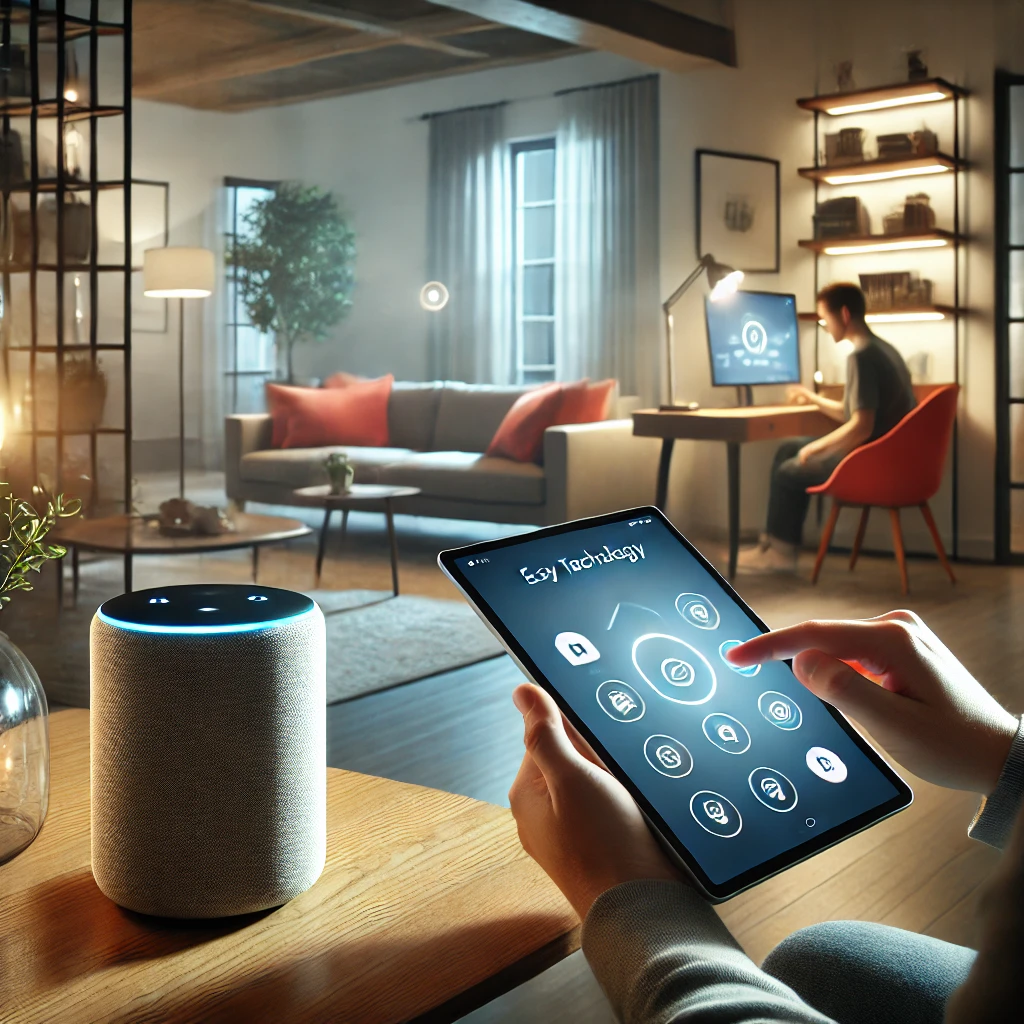Introduction
In today’s fast-paced world, technology plays an integral role in our daily lives. From smartphones to smart homes, the advancements in technology have significantly improved our quality of life. However, with the rapid pace of technological evolution, it’s easy to feel overwhelmed by the complexities of new gadgets, apps, and systems. This is where the concept of “easy technology” comes into play. Easy technology refers to innovations that are designed to be user-friendly, intuitive, and accessible to people of all ages and technical abilities. In this article, we will explore what easy technology is, why it matters, and how it is shaping the future of our everyday lives.
What is Easy Technology?
Easy technology is a term used to describe technological devices, software, and systems that are designed to be simple and easy to use. The goal of easy technology is to make advanced tools accessible to everyone, regardless of their technical expertise. This can include everything from user-friendly interfaces on smartphones and computers to smart home devices that can be controlled with simple voice commands.
The focus of easy technology is on reducing the learning curve associated with using new devices and applications. This means designing products that are intuitive, require minimal setup, and offer clear instructions. For example, a smartphone with a simplified interface that only displays essential apps and features is an example of easy technology aimed at senior citizens who may not be familiar with more complex devices.
Why Easy Technology Matters
1. Accessibility for All: One of the primary benefits of easy technology is that it makes advanced tools accessible to a broader audience. This includes people who may not be tech-savvy, such as the elderly, young children, or individuals with disabilities. By simplifying the user experience, easy technology ensures that more people can benefit from the latest innovations.
2. Time Efficiency: Easy technology saves time by eliminating the need for extensive training or troubleshooting. With devices that are straightforward and user-friendly, users can quickly adapt and make the most of the technology without getting bogged down by technical issues.
3. Enhanced Productivity: When technology is easy to use, it boosts productivity. Users can focus on the task at hand without being distracted by complicated interfaces or difficult-to-understand features. This is particularly important in work environments where time is of the essence.
4. Reduced Stress: For many people, dealing with complex technology can be a source of stress. Easy technology reduces this stress by offering solutions that are simple and effective. Whether it’s setting up a new device or troubleshooting an issue, easy technology makes the process less daunting.
5. Inclusive Innovation: Easy technology fosters inclusivity by ensuring that technological advancements do not leave anyone behind. As more industries adopt easy-to-use technology, it becomes possible for people of all ages and abilities to participate in and benefit from the digital world.
Examples of Easy Technology
1. Smartphones with Simplified Interfaces
– Modern smartphones often come with accessibility options that allow users to simplify their interfaces. For example, Apple’s iPhone offers a “Simple Mode” that displays only essential apps and features, making it easier for seniors or first-time smartphone users to navigate.
2. Voice-Activated Assistants
– Devices like Amazon’s Alexa and Google Assistant are prime examples of easy technology. These voice-activated assistants allow users to control various aspects of their smart homes, such as lighting, heating, and entertainment, with simple voice commands.
3. Wearable Health Monitors
– Wearable devices like fitness trackers and smartwatches are designed to be easy to use while providing valuable health data. These devices often feature one-touch operation and intuitive displays that allow users to monitor their health without needing any technical knowledge.
4. Smart Home Devices
– Smart home technology is becoming increasingly user-friendly. For instance, smart thermostats like the Nest Learning Thermostat automatically adjust the temperature based on the user’s preferences and habits, reducing the need for manual adjustments.
5. Tablets with Kid-Friendly Modes
– Tablets like Amazon’s Fire Kids Edition come with parental controls and kid-friendly modes that limit access to age-appropriate content. These devices are designed to be easy for children to use while giving parents peace of mind.
6. Universal Remote Controls
– Universal remote controls, such as Logitech’s Harmony series, allow users to control multiple devices with a single, easy-to-use remote. These remotes simplify the process of managing home entertainment systems, eliminating the need for multiple remotes.
The Future of Easy Technology
As technology continues to evolve, the demand for easy-to-use solutions is likely to increase. Companies are beginning to recognize the importance of accessibility and are investing in research and development to create products that cater to a broader audience. Here are some trends that are shaping the future of easy technology:
1. Artificial Intelligence and Machine Learning
– AI and machine learning are being used to create technology that adapts to the user’s needs. For example, AI-powered personal assistants can learn from user behavior and provide personalized recommendations, making technology more intuitive and easier to use.
2. Voice and Gesture Controls
– The future of easy technology lies in hands-free operation. Voice and gesture controls are becoming more prevalent, allowing users to interact with devices without the need for complex interfaces or physical input.
3. Augmented Reality (AR) and Virtual Reality (VR)
– AR and VR are opening up new possibilities for easy technology. These immersive technologies can be used to create interactive and intuitive experiences, particularly in education and training.
4. Customizable User Interfaces
– Future devices may offer even greater customization options, allowing users to tailor their interfaces to suit their preferences and needs. This could include everything from simplified menus to personalized shortcuts.
5. Enhanced Connectivity
– As more devices become interconnected, the focus will be on creating seamless experiences that require minimal user intervention. For example, smart homes of the future may automatically adjust settings based on the user’s routine without requiring any manual input.
Conclusion
Easy technology is revolutionizing the way we interact with the digital world. By focusing on accessibility, simplicity, and user-friendliness, easy technology ensures that everyone can benefit from the latest advancements, regardless of their technical abilities. As we move forward, the emphasis on creating intuitive and accessible solutions will continue to grow, making technology more inclusive and improving the quality of life for people around the globe.
Whether it’s through voice-activated assistants, wearable health monitors, or AI-powered personal devices, easy technology is here to stay. It’s not just about making technology simpler; it’s about making it smarter, more adaptive, and more aligned with the needs of all users. In a world where technology is constantly evolving, the concept of easy technology reminds us that sometimes, the most powerful innovations are those that anyone can use, understand, and enjoy.
Embrace the future of easy technology, and discover how it can make your life simpler, more connected, and more enjoyable.


